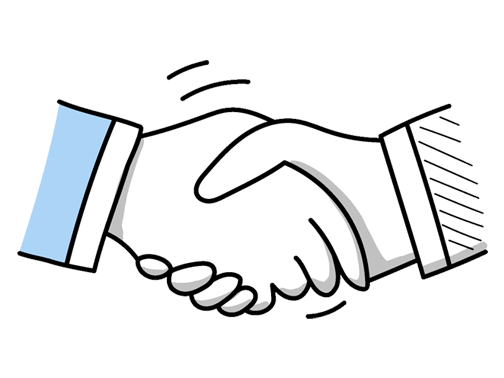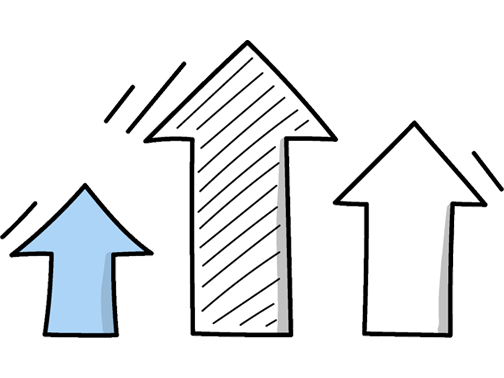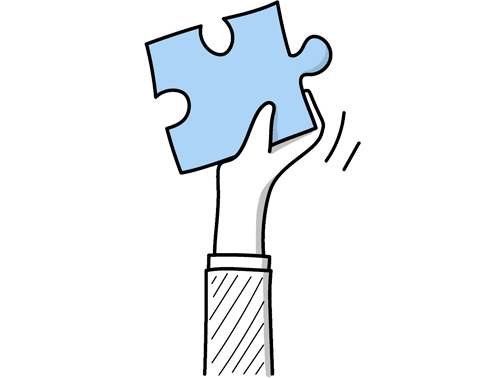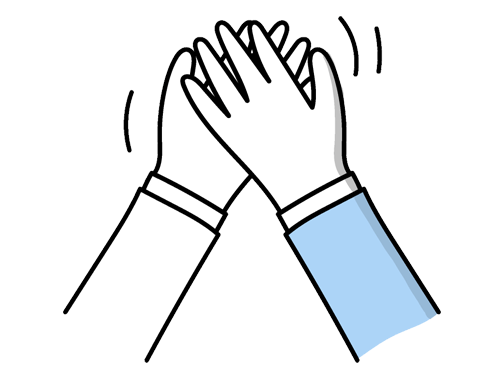Retail Supervisor Interview Questions (2025 Guide)
Find out common Retail Supervisor questions, how to answer, and tips for your next job interview
Practice Interviews Online - Identify your strengths and weakness in a realistic Retail Supervisor mock interview, under 10 minutes
Practice Now »Retail Supervisor Interview Questions
This interview question helps the employer understand how you lead and drive your team toward success. Explain that you set clear, achievable goals by breaking them into actionable steps, motivate your team through support and collaboration, and regularly monitor progress with feedback to ensure continuous improvement.
Example: To help my team hit targets, I start by clearly outlining what’s expected and breaking down larger goals into manageable steps. I stay involved day-to-day, offering support and encouragement, especially when things get tough. Regular check-ins allow us to track progress and address any issues early on. For example, during a busy season, I kept the team motivated by celebrating small wins, which really built momentum toward our overall success.
Employers ask this question to see how you plan, motivate, and adapt to meet business goals effectively. You need to explain how you use past sales data and market trends to set realistic targets, motivate your team with coaching and incentives, and regularly track progress to adjust strategies as needed.
Example: When setting sales targets, I focus on making them achievable and clear for the team, based on past performance and market trends. I keep everyone motivated by recognizing effort and offering support where needed. I regularly check how we’re doing against the goals and stay flexible, adjusting plans if something isn’t working. For example, if a product isn’t selling as expected, we might try different promotions or rearrange the floor to boost interest.
Employers ask this question to see how you handle pressure and lead others to overcome obstacles. You need to explain the challenge your team faced, the specific steps you took to support and organize the team, and the positive results your leadership achieved.
Example: In a previous role, our store faced unexpected staff shortages during a busy weekend. I quickly assessed the situation, reallocated tasks to match team strengths, and kept communication open to boost morale. By staying hands-on and positive, we maintained service quality and met targets despite the pressure. The experience reinforced how clear direction and teamwork can turn a tough situation into a success.
Employers ask this to see how you stay calm and effective under pressure while resolving issues. You need to say that you first analyze the situation to find the root cause, then create and follow a clear action plan, and finally review the results to learn and improve.
Example: When unexpected issues arise, I first take a moment to understand what’s really causing the problem. Then, I put together a straightforward plan to address it and act quickly to keep things running smoothly. Afterward, I reflect on what happened to see how we can improve for next time. For example, in a busy store, I once resolved a stock shortage by quickly reallocating resources and updating the team, which prevented delays and kept customers happy.
Employers ask this question to see how proactively you handle challenges and drive results despite obstacles. You need to show that you identify customer needs, motivate your team, and use promotions or merchandising creatively to increase sales during slow times.
Example: During quieter times, I focus on engaging customers personally, suggesting complementary products to enhance their experience. I encourage the team to highlight promotions creatively and keep the store inviting and well-organized. For example, during a slow afternoon, I once set up a small tasting station, which sparked interest and increased sales noticeably. Keeping energy up and being proactive helps turn slow periods into opportunities.
Questions like this assess your ability to build teamwork and a positive work culture. You need to explain how you encourage open communication, recognize each team member's strengths, and involve everyone in decision-making to create trust and collaboration.
Example: I encourage open dialogue by regularly checking in with the team and listening to everyone’s ideas, which helps build trust and respect. When making decisions, I involve the whole team, so everyone feels valued and motivated. For example, during a busy sale period, we held quick team huddles to share feedback and adjust tasks, which made the process smoother and strengthened our collaboration.
This question aims to see how you plan, execute, and measure success in driving sales, highlighting your leadership and problem-solving skills. You need to briefly describe the campaign goal, your specific actions, and the positive results you achieved.
Example: In my previous role, I led a summer promotion that increased sales by 20%. We focused on personalized customer service and staff training, which boosted engagement. I also rearranged product displays to highlight bestsellers, making the store more inviting. The team felt motivated, and customers responded well, showing that a clear strategy combined with strong teamwork can really drive results.
Employers ask this question to see how you support and grow your team, which is key for a retail supervisor’s success. In your answer, describe how you identified a team member’s strengths and needs, the specific coaching or support you gave, and the positive results that followed.
Example: In my previous role, I noticed one team member excelled in customer service but struggled with time management. I worked with them to set realistic goals and shared tips to prioritise tasks during busy periods. Over time, their confidence grew, and they became more efficient, which improved the whole team’s workflow. Seeing their progress was rewarding and reinforced how personalized support can really make a difference.
Hiring managers ask this question to see how you handle difficult situations and keep your team working smoothly. You need to say you listen carefully to everyone involved, mediate fairly, and set clear expectations to maintain a positive team environment.
Example: When conflicts arise, I make sure to listen carefully to everyone’s perspective to get a full picture. I aim to find practical solutions that feel fair to all involved, like mediating a scheduling dispute by adjusting shifts so everyone’s needs are met. My focus is on keeping a positive atmosphere so the team stays motivated and future issues are less likely to happen.
Employers ask this question to see how proactive you are in understanding and improving the customer experience. You need to explain that you actively collect feedback through direct conversations and surveys, then use this information to make practical changes that enhance service and customer satisfaction.
Example: I find that staying approachable encourages customers to share their thoughts openly. I also pay close attention to feedback from comment cards and online reviews to spot trends. When I notice common concerns, I discuss them with the team and adjust our service accordingly. For example, if customers mention slow checkout times, I work with staff to improve efficiency and keep things moving smoothly.
Employers ask this question to see how you handle challenges and make decisions under pressure. You need to clearly explain the problem, the steps you took to solve it, and the positive outcome you achieved.
Example: In a previous role, our stock system glitched during a busy weekend, causing discrepancies at checkout. I quickly gathered the team, communicated the issue clearly, and implemented manual stock checks while keeping customers informed. This kept operations smooth and avoided confusion. By staying calm and organised, we resolved the problem with minimal disruption and maintained customer trust throughout.
This interview question assesses your teamwork and communication skills across departments, which are essential for a retail supervisor to ensure smooth store operations. You need to describe a specific example where you worked effectively with another department to achieve a common goal, highlighting your collaboration and problem-solving abilities.
Example: In my previous role, I worked closely with the marketing team to organise an in-store promotion. We coordinated on displays and timing to ensure everything ran smoothly. By sharing feedback regularly, we adjusted quickly to customer responses, which boosted sales and improved the overall experience. It showed me how important clear communication and teamwork are between departments to achieve a common goal.
Questions like this assess your ability to maintain clear, consistent communication, which is vital for teamwork and efficient store operations. You need to explain that you use regular meetings and open channels for feedback to keep everyone informed and engaged.
Example: I focus on keeping communication clear and open, encouraging team members to share ideas and concerns freely. I find quick daily check-ins help everyone stay aligned, and I make a point to listen actively to understand their perspective. For example, in my last role, regular informal chats helped spot issues early and boosted team morale, creating a more supportive and productive environment.
This interview question aims to assess your commitment to exceptional customer service and your ability to take initiative beyond normal duties. In your answer, clearly describe the situation and what the customer needed, then explain the extra steps you took and the positive result that followed.
Example: Once, a customer came in urgently needing a specific product that was out of stock. I checked nearby stores, reserved it, and personally arranged a courier delivery to their home the same day. They were really relieved and grateful, saying it made a big difference. Moments like that show how going a bit further can truly build trust and loyalty with customers.
Interviewers ask this question to see how you track team progress and actively work to boost sales results. You need to explain that you regularly review sales metrics, provide constructive feedback, and implement coaching or training to help your team improve.
Example: I keep a close eye on individual and team targets through regular check-ins and sales reports. If someone’s struggling, I have a quick chat to understand any challenges and offer support or additional training. Celebrating small wins keeps motivation high too. For example, in my last role, a simple weekly huddle helped boost our team’s confidence and sales consistently over a few months.
Questions like this assess your ability to improve daily operations and ensure smooth workflow. You need to explain how you regularly review processes, use data to find issues, and take clear steps to fix and monitor improvements.
Example: When I notice things aren’t running as smoothly as they could, I start by gathering feedback from the team and observing day-to-day operations to pinpoint where delays or issues arise. Then, I dig a bit deeper to understand what’s causing these problems—whether it’s a process, equipment, or communication. After that, I work with the team to test solutions and keep track of how those changes improve things over time.
This question aims to see how you inspire and support your team to perform well by using clear communication, understanding individual motivations, and setting achievable goals. You need to explain how you encourage your team with positive feedback, adapt your approach to different personalities, and use clear targets to keep everyone focused and accountable.
Example: I believe motivating a team starts with open, honest communication and recognizing their efforts regularly. I take time to understand what drives each person, whether it’s personal goals or team success, and tailor my support accordingly. Setting clear, achievable targets helps keep everyone focused, and I make sure to celebrate progress along the way. For example, in my previous role, acknowledging small wins boosted morale and overall performance noticeably.
This interview question helps the employer understand how you monitor and improve store performance using concrete data. You need to mention key sales metrics like daily and weekly sales targets, explain how you use reports to make staffing or promotion decisions, and show your commitment to setting and tracking goals for ongoing improvement.
Example: When measuring a store’s sales success, I look at factors like daily sales figures, average transaction value, and conversion rates. These numbers help spot trends and areas to improve. For example, if conversion dips, we might adjust staff deployment or merchandising. Keeping an eye on targets motivates the team and drives consistent progress, making sure we’re always aiming to do better.
Questions like this assess your ability to maintain high customer service standards and handle challenges proactively. You need to explain how you train and support your team, monitor service quality through feedback, and actively resolve issues to keep customers satisfied.
Example: To keep customer service strong, I set clear expectations with the team and regularly check in on how things are running. If issues pop up, I jump in quickly to sort them out, whether that’s helping a customer or supporting a colleague. I also encourage open feedback so we can improve together. For example, in my last role, hosting brief daily huddles helped us stay aligned and respond faster to customer needs.
Interviewers ask this to assess your leadership, problem-solving, and teamwork skills in a real work scenario. You need to clearly describe how you organized the team, handled challenges, and achieved a positive result like improved sales or efficiency.
Example: In my previous role, I led a team to revamp our store’s stockroom layout. We faced tight deadlines and limited space, so I organised clear tasks, encouraging open communication to stay on track. By adjusting plans as challenges arose, we improved stock accessibility, cutting retrieval time by 30%. This not only boosted efficiency but also helped the team work more cohesively under pressure.
Employers ask this to see how you think outside the box and handle challenges effectively. You need to clearly describe a specific problem you faced, explain the creative solution you implemented, and show the positive results it brought to your team or store.
Example: In a previous role, we faced frequent stock shortages during peak hours, causing customer frustration. I introduced a simple colour-coded system to flag items needing restock in real time, which empowered the team to act quickly. This not only reduced wait times but also improved sales and customer satisfaction. It was a small change that made a noticeable difference in daily store operations.
This interview question helps employers understand your problem-solving and time management skills under pressure. You should explain how you assess urgency, delegate tasks if needed, and stay organized to handle multiple issues efficiently.
Example: When juggling multiple issues, I first quickly assess which one impacts the customer or team most urgently. Then, I tackle the problems step-by-step, staying calm and communicating clearly with everyone involved. For example, if a till goes down during a busy period, I’d delegate tasks so others assist customers while I fix the issue, ensuring smooth service without losing focus on other store operations.
Employers ask this to see how you ensure your team can turn complaints into positive outcomes. You should explain that you clearly teach step-by-step complaint procedures, use role-playing to practice responses, and coach your team to listen and empathize with customers.
Example: When training my team to manage complaints, I focus on making sure they fully understand our process and feel confident using it. We often run through real-life scenarios together, so they can practice staying calm and attentive. I stress the importance of truly listening to customers’ concerns and showing empathy, which helps turn a negative experience into a positive one. For example, role-playing a difficult customer helps team members respond thoughtfully rather than react impulsively.
What they want to know is how you manage conflict and keep customers happy under pressure. You need to say that you listen carefully to the customer's concerns, stay calm and empathetic, and offer practical solutions quickly to resolve the issue.
Example: When dealing with a difficult customer, I focus on really understanding their concerns by listening carefully and acknowledging how they feel. I keep calm and speak respectfully, which helps ease the tension. Then, I clearly explain what I’m doing to fix the problem, so they feel involved and reassured. For example, once a customer was upset about a delayed order—I stayed patient, clarified the issue, and offered a quick solution that satisfied them.
Questions like this assess your ability to manage team dynamics and resolve conflicts effectively to maintain a productive work environment. You should explain how you listen to everyone's ideas, encourage open discussion to find common ground, and make fair decisions when necessary to keep the team united.
Example: When team members disagree, I first listen carefully to everyone’s views to fully understand their ideas. Then, I encourage a calm discussion where we explore the options together and identify what works best for the team and our goals. If needed, I make a clear decision to move things forward, ensuring the team feels respected and stays motivated. For example, I once resolved a scheduling conflict by combining suggestions to suit both parties.
Ace your next Retail Supervisor interview with even more questions and answers
Common Interview Questions To Expect
The interviewer is looking for a brief overview of your background, experience, and skills relevant to the position. Focus on your professional achievements and career goals.
Example: Sure! I have been working in the retail industry for over 5 years, with experience in customer service and team management. I have a proven track record of increasing sales and improving store operations. My goal is to continue growing in my career as a Retail Supervisor and contribute to the success of the company.
The interviewer is looking for a candidate to demonstrate their skills, experience, and passion for the role. Answers should highlight relevant qualifications, achievements, and how they can contribute to the company's success.
Example: You should hire me for this position because I have over 5 years of experience in retail management, including supervisory roles. I have a proven track record of increasing sales, improving customer satisfaction, and leading a team effectively. I am passionate about the retail industry and excited about the opportunity to contribute to the success of your company.
The interviewer is looking for you to highlight your key skills, qualities, and experiences that make you a strong candidate for the role. Be sure to provide specific examples to support your strengths.
Example: I would say my biggest strengths are my excellent communication skills, my ability to problem-solve quickly, and my strong leadership abilities. For example, in my current role as a Retail Supervisor, I have successfully trained and motivated my team to exceed sales targets consistently. I believe these strengths make me a valuable asset to any retail team.
The interviewer is looking for insight into your long-term aspirations and how they align with the company's goals. Be honest, specific, and show ambition.
Example: My career goal is to continue growing within the retail industry and eventually become a store manager. I am passionate about leading teams and driving sales, so I hope to take on more responsibilities and make a positive impact on the company. Ultimately, I want to contribute to the success of the business and continue learning and developing my skills.
Interviewers are looking for honesty, professionalism, and a positive attitude in your response. Be prepared to explain any reasons for leaving your previous job in a constructive manner.
Example: I left my last job because I was looking for new opportunities for growth and development in my career. I felt that I had reached a plateau in my role and wanted to challenge myself in a new environment. I am excited about the possibility of bringing my skills and experience to this new position as a Retail Supervisor.
Company Research Tips
The company's official website is a goldmine of information. Look for details about the company's history, mission, vision, and values. Pay special attention to the 'About Us', 'Our Team', and 'News' or 'Blog' sections. These can provide insights into the company culture, recent achievements, and future plans. For a Retail Supervisor role, understanding the company's retail strategy and customer service philosophy would be particularly useful.
Tip: Don't just skim through the website. Take notes and think about how the information you find aligns with your skills and experiences.
Social media platforms like LinkedIn, Facebook, Twitter, and Instagram can provide a more informal view of the company. They can reveal how the company interacts with its customers and employees, what kind of content it shares, and how it responds to feedback. For a Retail Supervisor role, observing the company's customer engagement strategies on social media can be very informative.
Tip: Look for patterns in the company's posts and interactions. This can give you a sense of their brand voice and values.
Understanding the company's position in the market and how it differentiates itself from its competitors can be very useful. This can be done by researching the company's main competitors and comparing their products, services, and customer reviews. For a Retail Supervisor role, understanding the competitive landscape can help you suggest strategies to improve the company's retail performance.
Tip: Use tools like Google Alerts to keep track of news about the company and its competitors.
Websites like Glassdoor and Indeed provide reviews from current and former employees. These can give you a sense of the company culture, management style, and potential challenges. For a Retail Supervisor role, reviews from retail employees can be particularly insightful.
Tip: Take these reviews with a grain of salt. They represent individual experiences and may not reflect the overall company culture.
What to wear to an Retail Supervisor interview
- Opt for a smart-casual outfit.
- A clean, ironed shirt or blouse.
- Pair with tailored trousers or a skirt.
- Choose neutral or dark colours.
- Wear polished, closed-toe shoes.
- Avoid flashy jewellery or accessories.
- Ensure your outfit is comfortable.
- Maintain good personal hygiene.
- Keep makeup and perfume/cologne minimal.
- Carry a professional-looking bag or briefcase.





